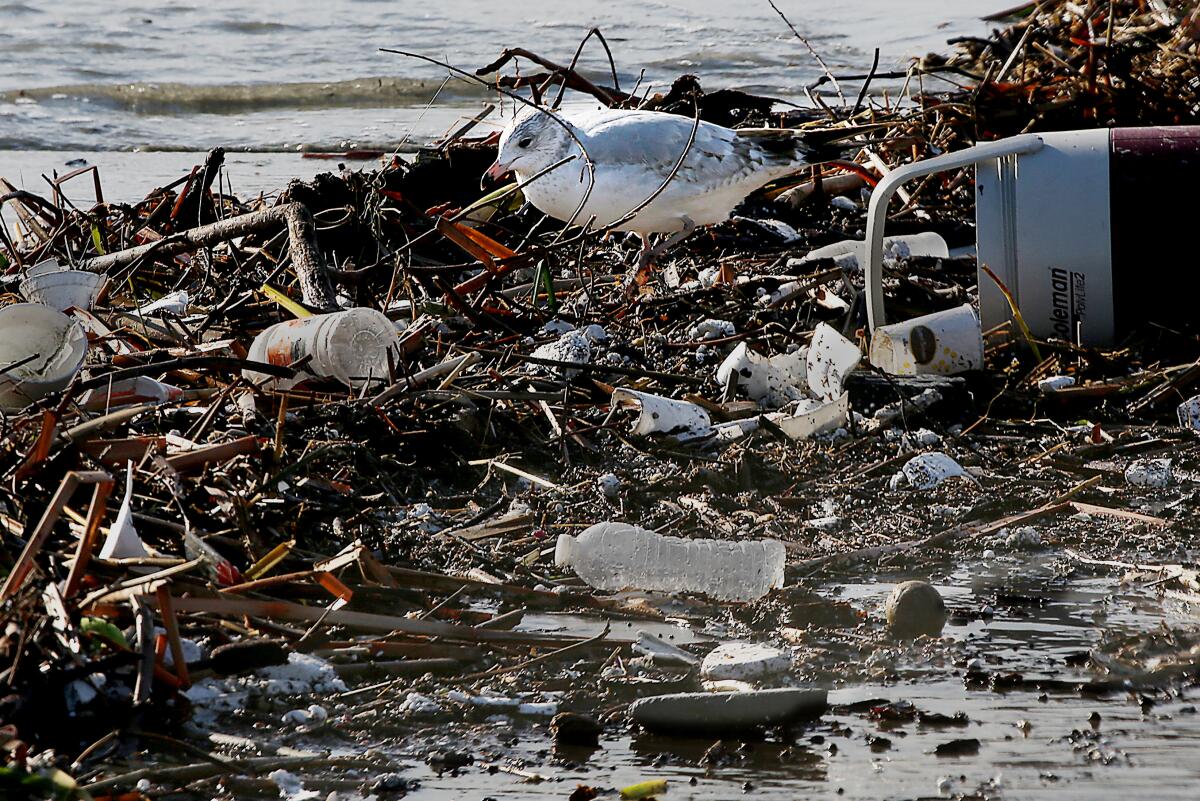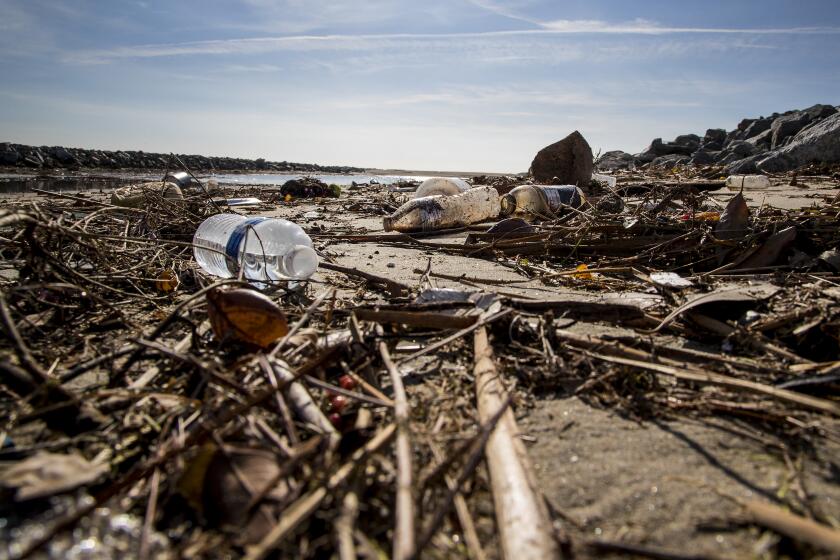California is leading the nation on cutting plastic trash. But it still needs to do more

- Share via
Last year was a good one for trash. Or, rather, for the prospects of reducing it.
For the last several years, lawmakers have passed new laws aimed at curbing plastic, from the 2014 ban on single-use plastic grocery bags to restrictions on use of plastic straws. But in 2022, they went big and broad, enacting Senate Bill 54, a revolutionary law that will start phasing out all varieties of single-use plastic in 2025 — basically everything on the shelves of grocery and other retail stores — through escalating composting and recycling requirements on consumer products packaging. Most importantly, the law puts the onus on the producers of the packaging to figure out how to make it happen rather than on consumers or state and local governments.
It’s a game changer in regard to the handling of waste that we hope other states and the nation will adopt one day. And it couldn’t come at a better time. But even with all the state and local efforts to improve recycling, roll out new composting programs and restrict plastic takeout ware over the last decade, California’s trash diversion rates are going in the opposite direction.
Editorial: California has a chance to lead the nation on cutting plastic trash. If we don’t blow it
Environmentalists and industry representatives have hammered out a deal for the most significant single-use plastic legislation in the nation. But it has only a week to pass both houses of the state Legislature.
CalRecycle estimates that in 2020 only about 42% of California’s trash was diverted, which is dreadful — and very far from the state’s longtime goal of reducing waste 75% by 2020. It got worse in 2021, falling to 40%. Californians generated 76.7 million tons of trash in 2021 and 46 million tons of it ended up in the landfill. The rest was either composted or recycled (though being recycled doesn’t mean it was turned into something else, only that it was sorted out of the trash stream and maybe the material may end up being used).
Other sources of plastic not targeted by SB 54 are increasingly clogging the waste stream. Call them not-so-durable consumer goods.
“The truth is we are generating waste so much faster than our efforts to recycle,” lamented Mark Murray of Californians Against Waste, adding that the increase in waste generation is in categories of goods that are not part of traditional recycling systems, such as textiles, electronics and housewares. These things aren’t considered single-use, but don’t last long either. And like packaging, many of these products are made from plastic.
Consumers should have the authority and tools to fix the stuff they own. But they don’t if those things have digital components
In 2023 and beyond, California’s policymakers, anti-waste advocates and environmentalists must turn their attention to this next trash scourge. There’s no way that California can hope to build a circular economy, or zero-waste system, without addressing this considerable, and growing, source of plastic trash.
They can start by passing a “right to repair” law for consumer appliances and electronics similar to the one introduced by state Sen. Susan Talamantes Eggman (D-Stockton) that stalled in the Senate Appropriations Committee last year. Right-to-repair laws require that product manufacturers provide reasonable access to repair manuals and parts so that consumers don’t have to throw out their toasters, smartphones or blenders when they break. California households produce 1.1 million tons of electronic waste every year, according to U.S. Public Research Interest Group, a consumer organization advocating for right-to-repair laws. Several states have passed some version of a right-to-repair law, most recently New York.
Legislators should also explore expanding the producer responsibility model that undergirds SB 54 and has been used successfully in a state program requiring paint manufacturers to take back unused paint, as a way to deal with the afterlife of consumer goods that aren’t recyclable.
The public has woken up from the dream that our increasing reliance on disposable plastic could be handled if only people did a better job sorting their trash. The evidence of this folly can be found all around us — in the litter on the beach from plastic dumped in oceans and rivers and the microplastics that have made their way into the food chain and even the air we breathe. Now much stronger policies need to follow.
More to Read
A cure for the common opinion
Get thought-provoking perspectives with our weekly newsletter.
You may occasionally receive promotional content from the Los Angeles Times.











